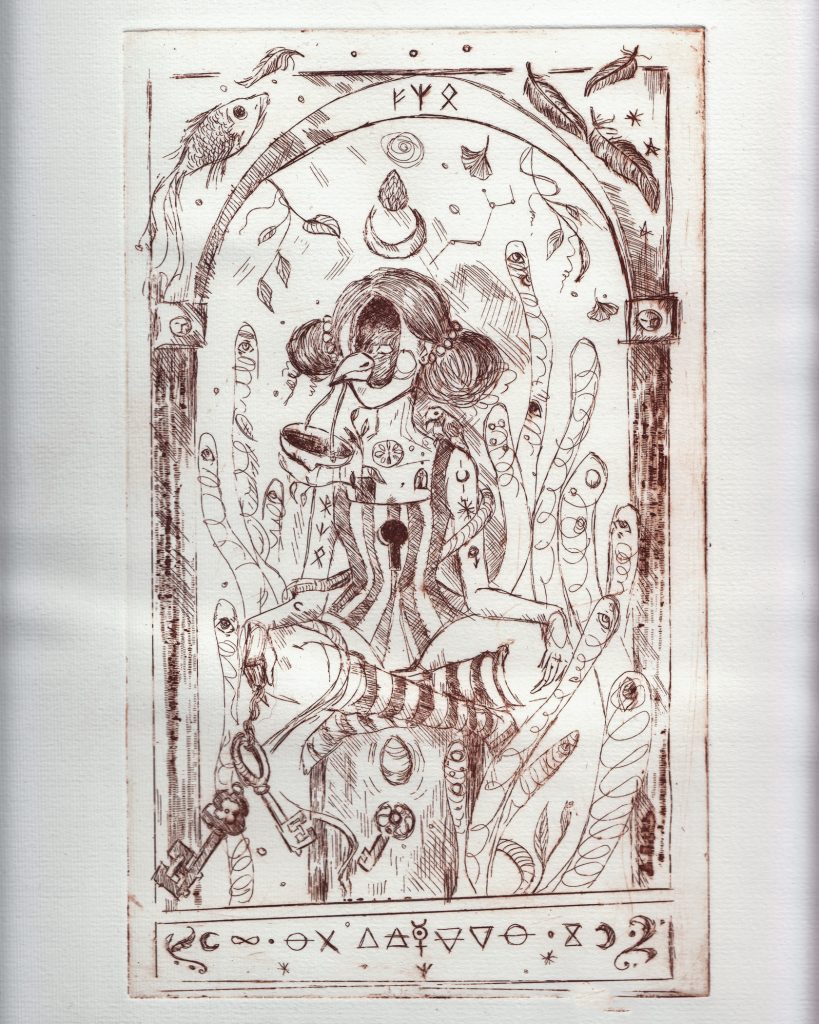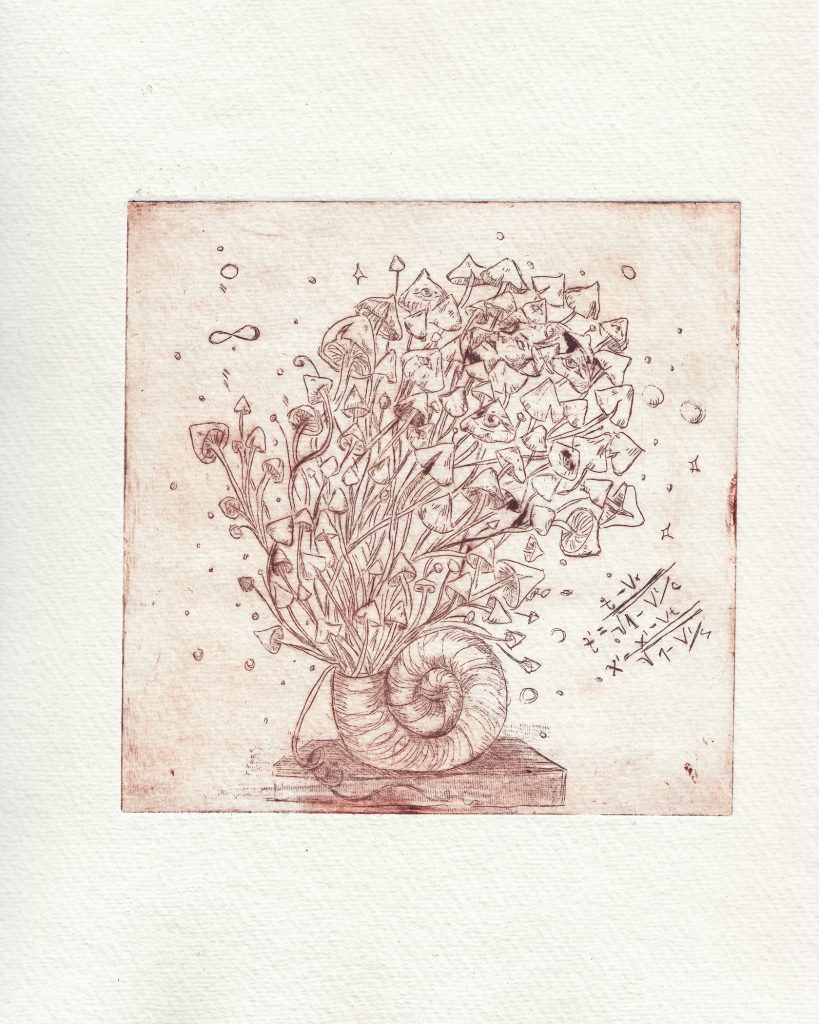
03 Jan ART 718 what worked?
In the art 718 project, I implemented a variety of new techniques that I had learned.
After evaluating the results and creating an article about what in my opinion did not work, I have identified certain elements that were successful and that I am satisfied with.
In this section, I would like to reflect on these positive aspects of my project and discuss how they contributed to the overall success of my work.
Etching
As an artist, I have always been drawn to the medium of etching. The process of creating an etching involves using acid to etch lines into a metal plate, which is then used to make a print. I find the technical aspects of etching to be incredibly satisfying, as it allows for a high level of detail and precision in my work.
But it is not all about the technical aspects, my fascination with the process goes beyond that. I find that it is a powerful medium for expressing my ideas. The delicate lines and subtle variations in tone that can be achieved through etching allow me to create a sense of depth and mysticism in my works.
That is why I decided to use it my series of dream cards, which aim to explore the surreal and dreamlike nature of our innermost thoughts and feelings.



I feel that the scale of those prints play a big role in how those are experienced by the audience. Those etchings are quite small, I started with a piece that is not bigger than a playing card, so the level of detail and the size are an important aspect of this. Some of the most recent drawings are slightly bigger, bo still not bigger than an A4 paper.









Argumented Reality Art
I was exploring new ways to push the boundaries of my work and explore different forms of expression and creating a more immersive experience . The Argumented Reality was quite an interesting way of transcending from the traditional art into more immersive art. I believe that AR has the potential to enhance the viewing experience for my audience, by allowing them to engage with my work in a more immersive and interactive way.
With AR, I can create digital layers that overlay my physical pieces, adding an additional dimension to the artwork and allowing the viewer to see it in a whole new light.
I used AR to create an animation with music that appears when someone views one of my etchings through a mobile device, bringing the etching to life.
I also see AR as a way to create more interactive and collaborative art. For example, I could use AR to create an installation where people can walk around and explore a virtual world, interacting with the different elements and symbols in my work in a way that allows them to feel more connected to the piece and to their own emotions.
That experimentation has led me into the VR technology, however I am not sure where to start with creating a full virtual experience, it could be a project for the collaboration next semester?


No Comments